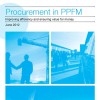This year’s Budget is one that small companies should be excited about, the chancellor not only announced his intention to lower corporation tax to 17% by 2020 but also a raft of measures to shift support towards smaller businesses and savings.
Many will ask, why is such a shift important? SMEs make up a significant proportion of businesses and economic activity in the UK. The FSB estimate that small businesses accounted for 99.3% of all private sector businesses at the start of 2015. That is a lot of activity and economic potential that could be unlocked.
Whilst there have been some announcements that add costs of items such as the implementation of the National Living Wage, assistance to small companies during the transition until 2020 will help to relieve cash flow issues.
There were also new saving products in the budget with the launch of Help to Save and the lifetime ISA. These will be a welcome relief to individuals that have struggled to improve their financial position give the historically low interest rates.
Infrastructure was another potential beneficiary with the announcement of HS3, Crossrail 2, several road investments and extra funds for flood defences. Such investment is key to ensuring the economic potential of the UK in the future. Caution should, however, be urged. Whilst the commitment to these projects is sound progress the UK still struggles in the international rankings for its infrastructure and its investment levels are generally considered to be below where they need to be.
Below is a summary of the key announcements from the budget documents (click here)
Announcements
- Permanently double Small Business Rate Relief from 50% to 100%.
- Increase the threshold for the standard business rates multiplier to a rateable value of £51,000.
- From April 2020, switch in the annual indexation of business rates from RPI to CPI
- By 2022 local authority business rate systems will be linked to HMRC digital tax accounts
- From April 2018, Class 2 NICs will be abolished
- The government will reform Class 4 NICs
- The introduction of two new £1,000 allowances for property and trading income.
- From 6 April 2016, the higher rate of Capital Gains Tax (CGT) will be reduced from 28% to 20%, and the basic rate will be reduced from 18% to 10%.
- A restriction of the amount of profit (in excess of £5m) that can be offset through losses carried forward.
- Abolish the CRC energy efficiency scheme following the 2018-19 compliance year
- The reform of stamp duty on commercial property
- Increase the VAT registration threshold in line with inflation to £83,000 from 1 April 2016
- A further £3.5bn of savings from public spending in 2019-20
- Around £1.5bn investment in areas such as housing, schools and transport over the next three years
- Increasing the personal allowance from £11,000 in 2016-17 to £11,500 in 2017-18
- Increase the higher rate threshold by £2,000 to £45,000 in 2017-18
- The devolution of power to school leaders, expecting all schools to become academies by 2020
- Create a National Funding Formula for schools from 2017-18.
- Invest £20 million a year of new funding in a Northern Powerhouse Schools.
- A new soft drinks industry levy targeted at producers and importers of soft drinks that contain added sugar.
- The ISA allowance will rise from £15,240 to £20,000 in April 2017
- From 6 April 2017 any adult under 40 will be able to open a new Lifetime ISA. They can save up to £4,000 each year and will receive a 25% bonus from the government on every pound they put in
- A new Help to Save scheme for those on low incomes
- Increase the existing £150 Income Tax and National Insurance relief for employer arranged pension advice to £500
- The delivery of 13,000 affordable homes by bringing forward £250 million of capital spending
- Move to a more zonal and ‘red line’ planning approach
- The new mandatory National Living Wage (NLW) will come into effect from 1 April 2016, set at £7.20 an hour for workers aged 25 and above.
- The main rate of the NMW, which applies for workers aged between 21 and 24, at £6.95 from October 2016
- An individual lifetime limit of £100,000 on gains eligible for Capital Gains Tax (CGT) exemption through Employee Shareholder Status
- £300 million of funding to improve northern transport connectivity and is giving the green light to High Speed 3
- The green light to Crossrail 2, supported by £80 million to help fund development
- Deliver a 5G strategy in 2017
- Launch of the second Roads Investment Strategy, which will determine the investment plans for the period from 2020-21 to 2024-25
- Allocate a £50 million Pothole Action Fund for England in 2016-17
- Boost spending on flood defence and resilience by over £700 million by 2020-21
- £50 million for innovation in energy storage
- Auction Contracts for Difference of up to £730 million this Parliament
- Establish a new Broadband Investment Fund
- Commit to the 750MHz public sector spectrum in bands under 10GHz being made available by 2022
- New devolution deals with the West of England, East Anglia, and Greater Lincolnshire



